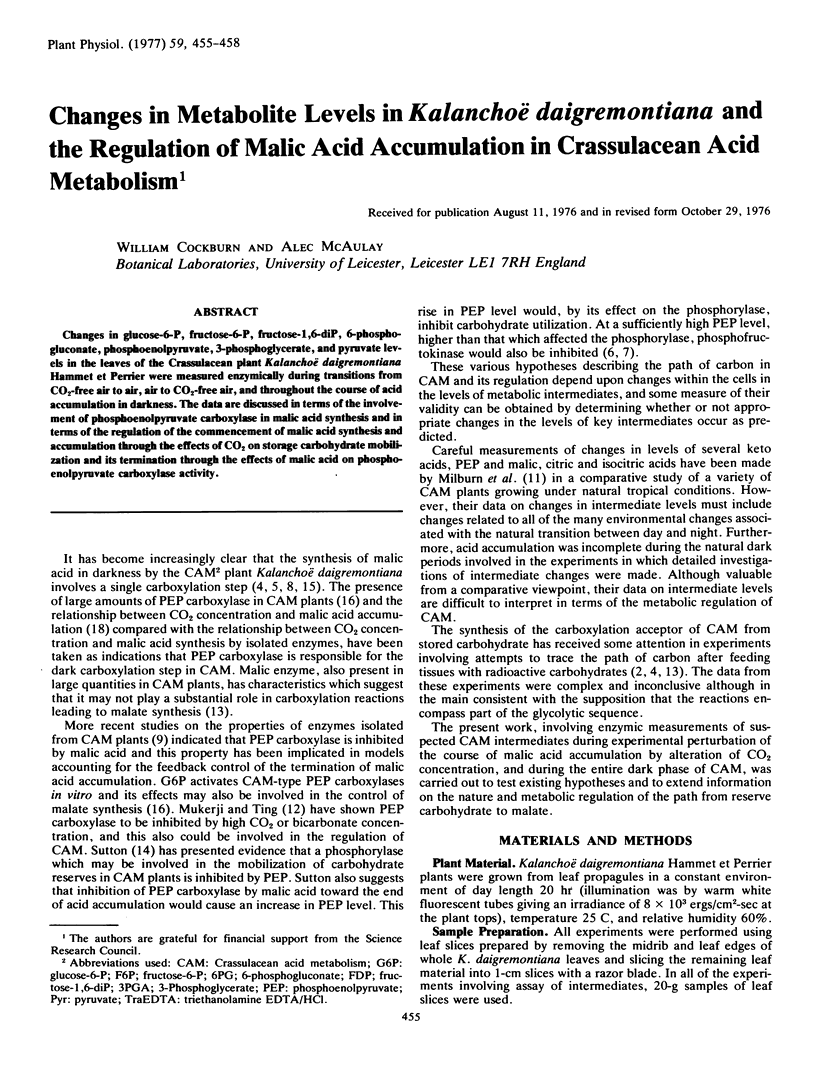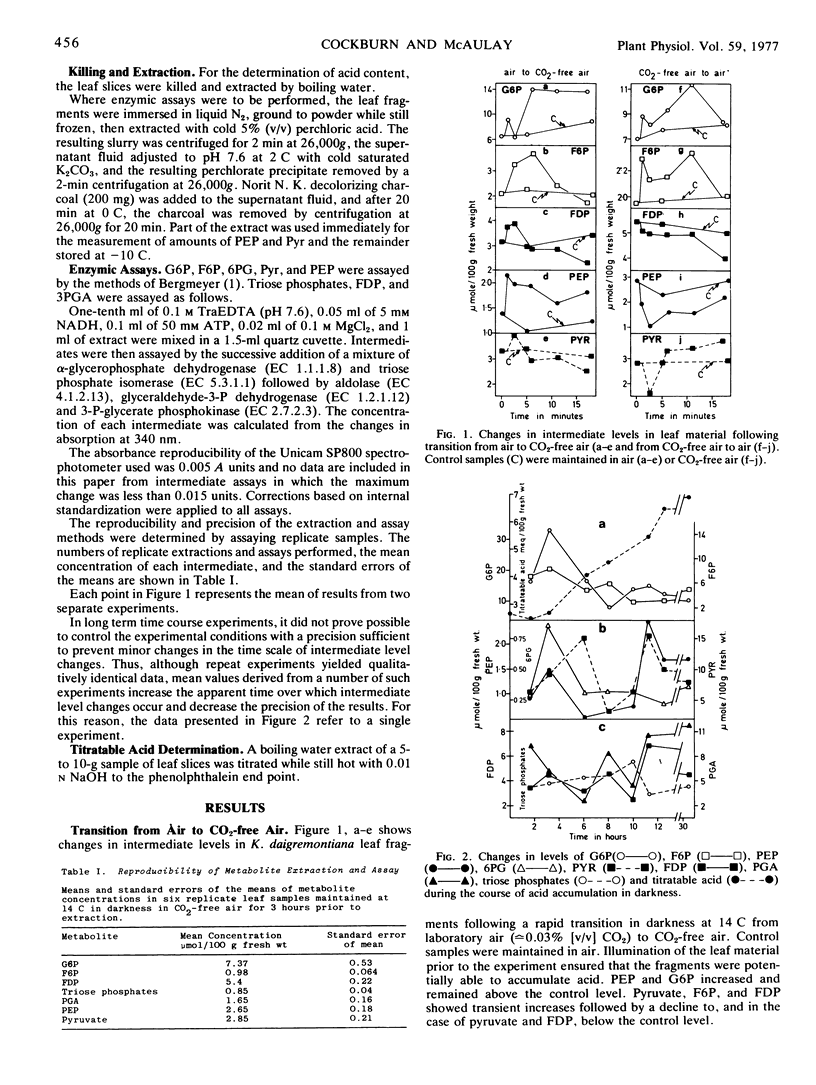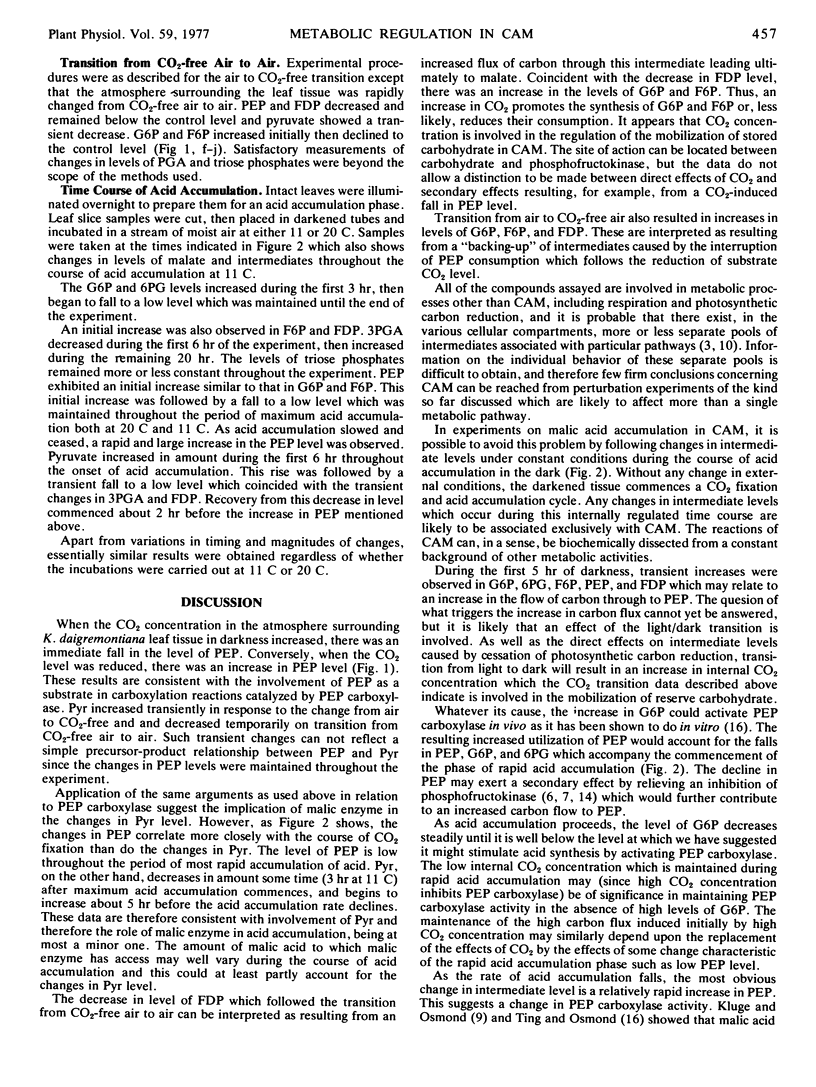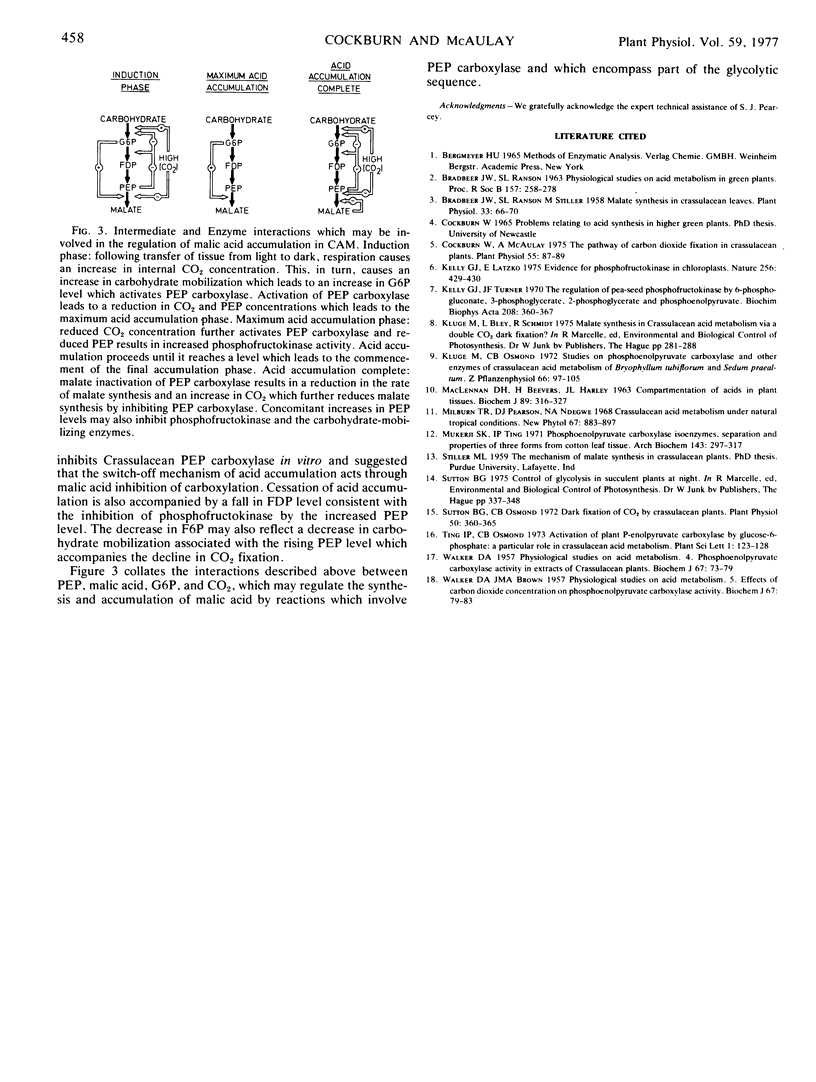Abstract
Changes in glucose-6-P, fructose-6-P, fructose-1,6-diP, 6-phospho-gluconate, phosphoenolpyruvate, 3-phosphoglycerate, and pyruvate levels in the leaves of the Crassulacean plant Kalanchoë daigremontiana Hammet et Perrier were measured enzymically during transitions from CO2-free air to air, air to CO2-free air, and throughout the course of acid accumulation in darkness. The data are discussed in terms of the involvement of phosphoenolpyruvate carboxylase in malic acid synthesis and in terms of the regulation of the commencement of malic acid synthesis and accumulation through the effects of CO2 on storage carbohydrate mobilization and its termination through the effects of malic acid on phosphoenolpyruvate carboxylase activity.
Full text
PDF



Selected References
These references are in PubMed. This may not be the complete list of references from this article.
- Bradbeer J. W., Ranson S. L., Stiller M. Malate Synthesis in Crassulacean Leaves. I. The Distribution of C in Malate of Leaves Exposed to CO(2) in the Dark. Plant Physiol. 1958 Jan;33(1):66–70. doi: 10.1104/pp.33.1.66. [DOI] [PMC free article] [PubMed] [Google Scholar]
- Cockburn W., McAulay A. The pathway of carbon dioxide fixation in crassulacean plants. Plant Physiol. 1975 Jan;55(1):87–89. doi: 10.1104/pp.55.1.87. [DOI] [PMC free article] [PubMed] [Google Scholar]
- Kelly G. J., Turner J. F. The regulation of pea-seed phosphofructokinase by 6-phosphogluconate, 3-phosphoglycerate, 2-phosphoglycerate and phosphoenolpyruvate. Biochim Biophys Acta. 1970 Jun;208(3):360–367. doi: 10.1016/0304-4165(70)90207-2. [DOI] [PubMed] [Google Scholar]
- Maclennan D. H., Beevers H., Harley J. L. 'Compartmentation' of acids in plant tissues. Biochem J. 1963 Nov;89(2):316–327. doi: 10.1042/bj0890316. [DOI] [PMC free article] [PubMed] [Google Scholar]
- Mukerji S. K., Ting I. P. Phosphoenolpyruvate carboxylase isoenzymes: separation and properties of three forms from cotton leaf tissue. Arch Biochem Biophys. 1971 Mar;143(1):297–317. doi: 10.1016/0003-9861(71)90212-8. [DOI] [PubMed] [Google Scholar]
- Sutton B. G., Osmond C. B. Dark Fixation of CO(2) by Crassulacean Plants: Evidence for a Single Carboxylation Step. Plant Physiol. 1972 Sep;50(3):360–365. doi: 10.1104/pp.50.3.360. [DOI] [PMC free article] [PubMed] [Google Scholar]
- WALKER D. A., BROWN J. M. Physiological studies on acid metabolism. 5. Effects of carbon dioxide concentration on phosphoenolpyruvic carboxylase activity. Biochem J. 1957 Sep;67(1):79–83. doi: 10.1042/bj0670079. [DOI] [PMC free article] [PubMed] [Google Scholar]
- WALKER D. A. Physiological studies on acid metabolism. 4. Phosphoenolpyruvic carboxylase activity in extracts of Crassulacean plants. Biochem J. 1957 Sep;67(1):73–79. doi: 10.1042/bj0670073. [DOI] [PMC free article] [PubMed] [Google Scholar]


